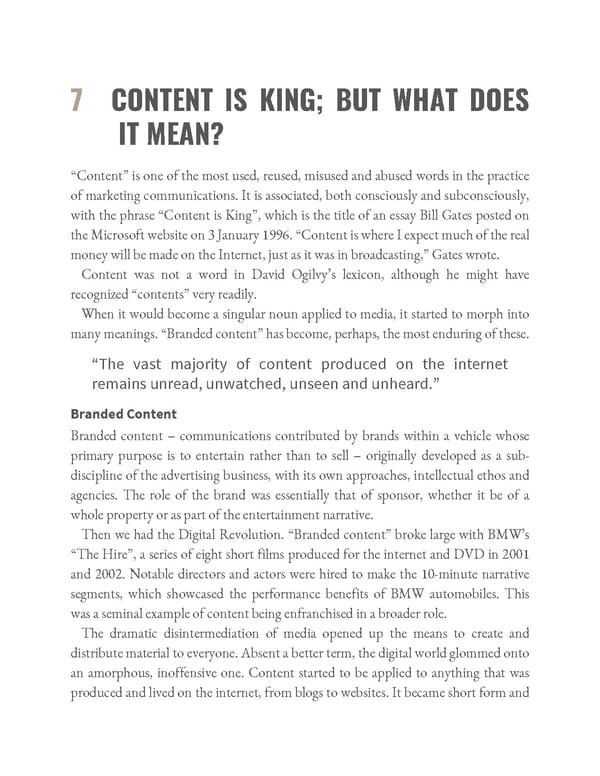7 CONTENT IS KING; BUT WHAT DOES IT MEAN? “Content” is one of the most used, reused, misused and abused words in the practice of marketing communications. It is associated, both consciously and subconsciously, with the phrase “Content is King”, which is the title of an essay Bill Gates posted on the Microsoft website on 3 January 1996. “Content is where I expect much of the real money will be made on the Internet, just as it was in broadcasting,” Gates wrote. Content was not a word in David Ogilvy’s lexicon, although he might have recognized “contents” very readily. When it would become a singular noun applied to media, it started to morph into many meanings. “Branded content” has become, perhaps, the most enduring of these. “The vast majority of content produced on the internet remains unread, unwatched, unseen and unheard.” Branded Content Branded content – communications contributed by brands within a vehicle whose primary purpose is to entertain rather than to sell – originally developed as a sub- discipline of the advertising business, with its own approaches, intellectual ethos and agencies. The role of the brand was essentially that of sponsor, whether it be of a whole property or as part of the entertainment narrative. Then we had the Digital Revolution. “Branded content” broke large with BMW’s “The Hire”, a series of eight short films produced for the internet and DVD in 2001 and 2002. Notable directors and actors were hired to make the 10-minute narrative segments, which showcased the performance benefits of BMW automobiles. This was a seminal example of content being enfranchised in a broader role. The dramatic disintermediation of media opened up the means to create and distribute material to everyone. Absent a better term, the digital world glommed onto an amorphous, inoffensive one. Content started to be applied to anything that was produced and lived on the internet, from blogs to websites. It became short form and
 Ogilvy on Advertising in the Digital Age Page 129 Page 131
Ogilvy on Advertising in the Digital Age Page 129 Page 131